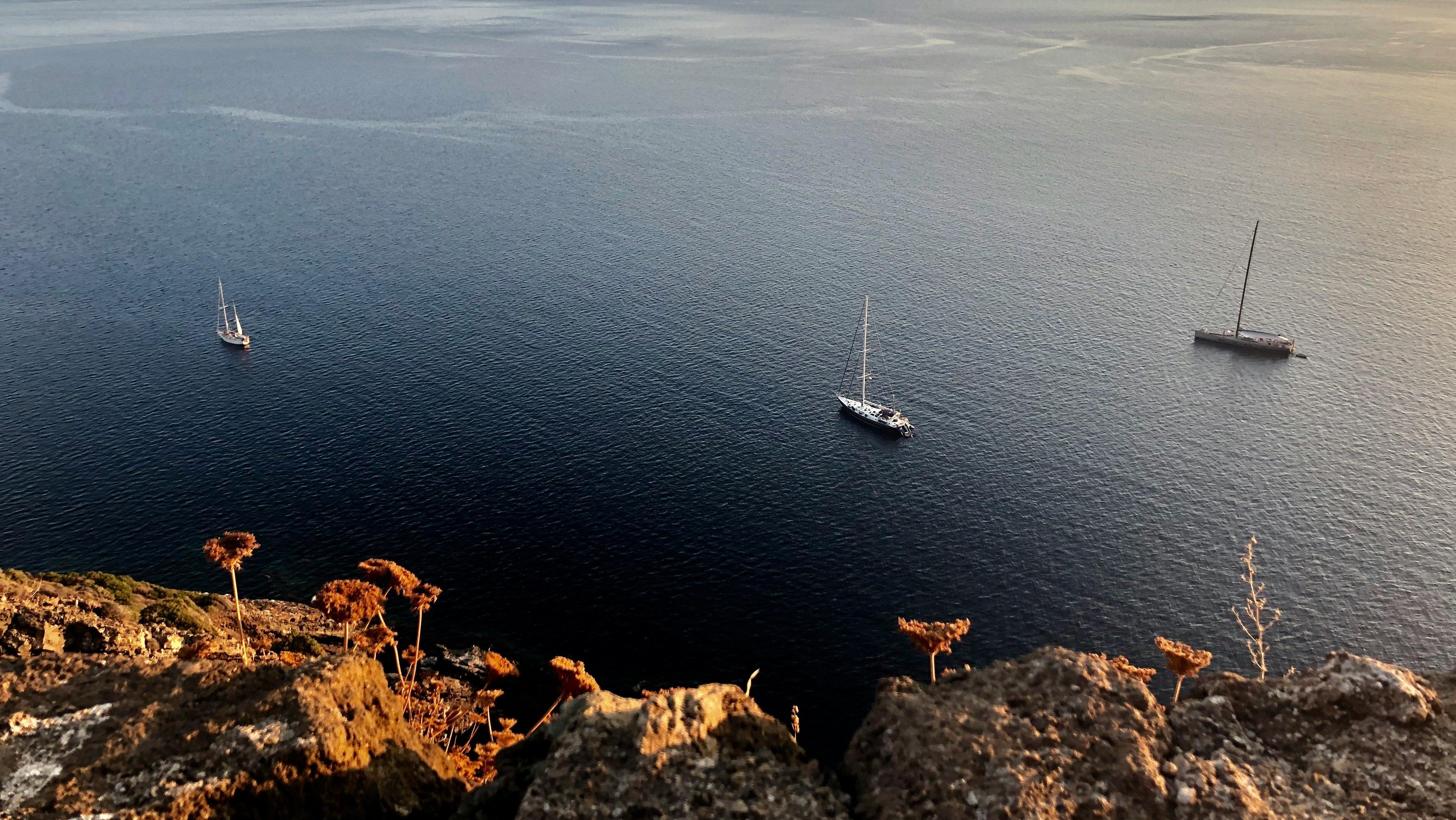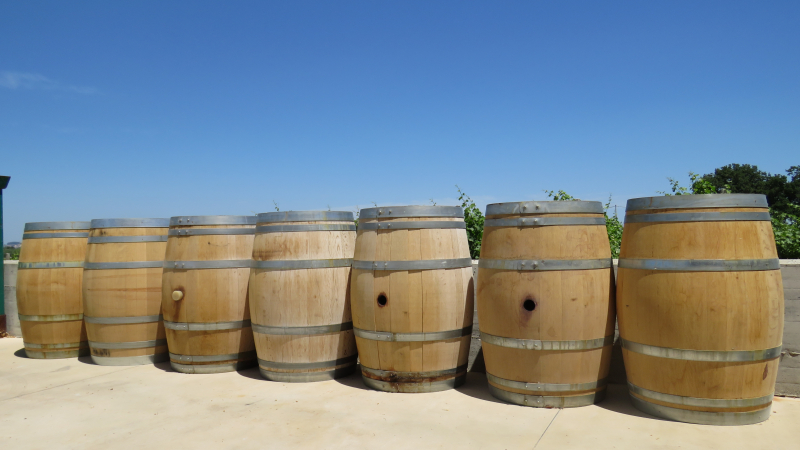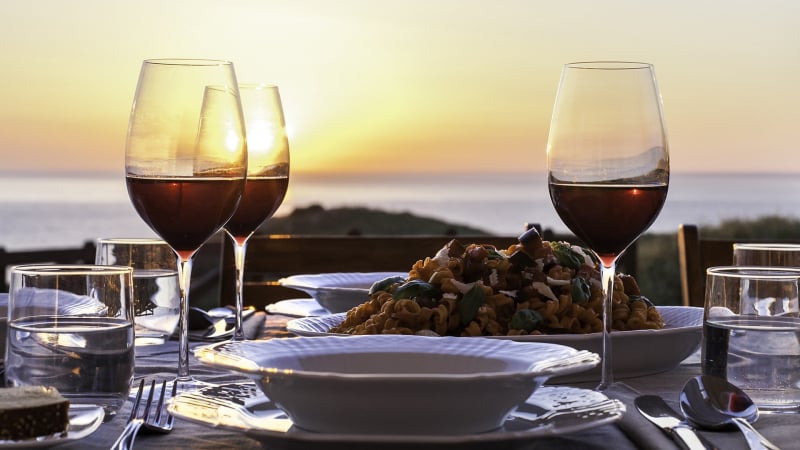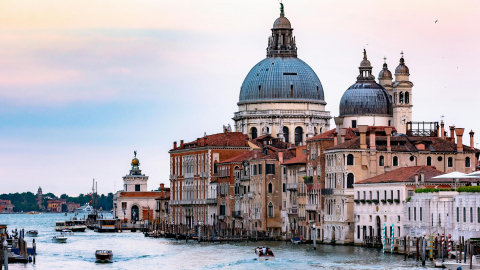The rich history of Pantelleria
Pantelleria’s strategic location in the Strait of Sicily has made it a coveted outpost for civilizations throughout history. The island was first settled in the Neolithic period, with archaeological sites such as the Sesi (stone structures used as funerary arches) suggesting an advanced prehistoric culture once existed. For centuries, nations have fought for control of this rugged but valuable island.
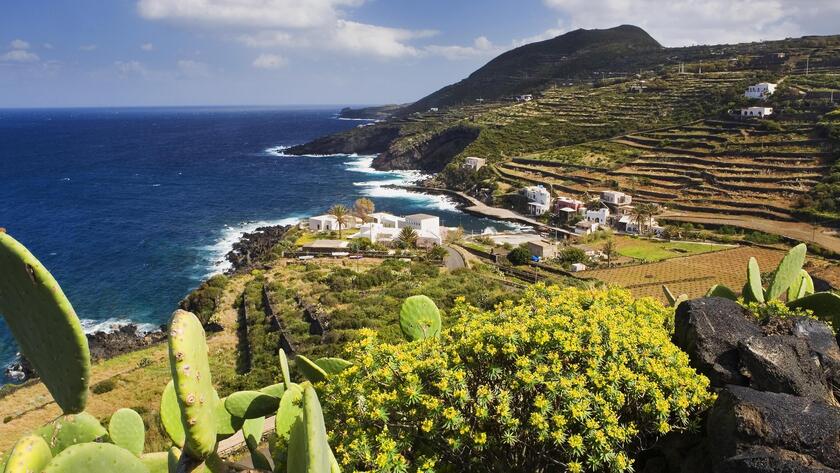
Pantelleria, a small, mountainous island located between Sicily and Tunisia in the Mediterranean Sea
Today, traces of the island’s multi-layered history are still evident in its architecture, agricultural practices and cuisine, while many areas remain untouched and untouristed. “What fascinates me about these ‘wild’ Italian islands is the older generations,” says Dalila Calabrese, an Italian travel consultant based in Naples. “You can find someone in Pantelleria who, despite being 80 or 90 years old, has never left the island and has no idea what life on the mainland is like. I think this is something that is rare in places that are over-touristed.”
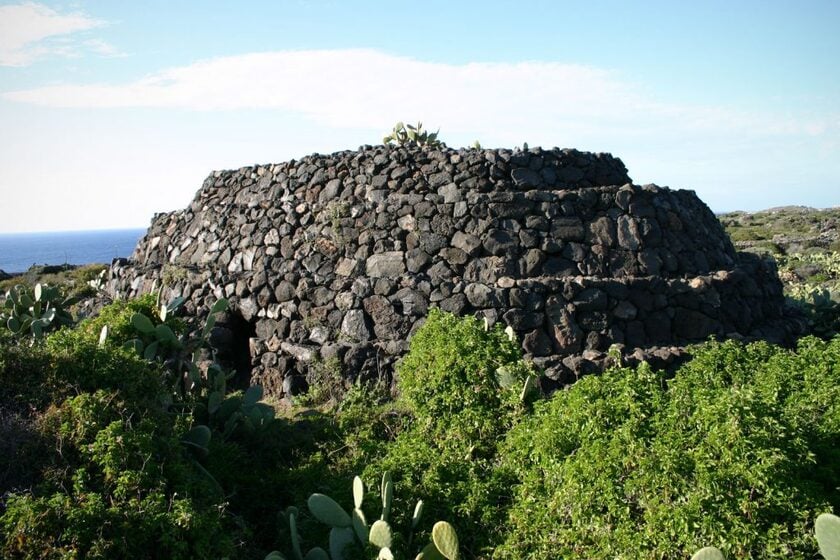
Sesi - historical site of Pantelleria island from the Neolithic period, used as a funerary dome
Advantages from harsh nature
The island’s harsh conditions, from the scorching sun, strong winds, arid climate to rugged terrain that mixes dry and volcanic soil, have created a dramatic natural environment. Natural hot springs and steam vents testify to the island’s volcanic origins, while coves and steep cliffs hug the crystal-clear Mediterranean waters, creating a stunning, unspoiled coastline. The island’s lush vegetation contrasts with the dark lava rock, and it is because of these contrasts that ancient agricultural practices were adapted to the island’s challenging conditions.
Pantelleria’s famous gardens, where delicate citrus trees are surrounded by stone walls to protect them from the constant wind, and the Zibibbo vineyards – Pantelleria’s native grape, also known as Moscato d’Alessandria – thrive in the island’s mineral-rich soil. The vineyards are best known for producing passito, a sweet dessert wine made from dried grapes. While most Zibibbo grapes are used to make passito, they are also used to make still white wines, which are less sweet and drier than passito. “Passito is the oldest, unmodified wine in existence and probably one of the first cultivated wines,” says Calabrese.

Zibibbo - native grape variety of Pantelleria
UNESCO recognized grape growing process
The Pantelleria grape growing method, called Alberello Pantesco (or vite ad alberello), is a low-bush vine system. The vines are pruned into bushes close to the ground, in holes up to 23 inches (58 cm) deep. This system has been used for centuries and is believed to have begun with the Phoenicians in the 8th century BC, when they brought the Egyptian grape variety Zibibbo to Pantelleria. In fact, the vite ad alberello growing method used by all Pantelleria farmers was recognized by UNESCO as an Intangible Cultural Heritage of Humanity in 2014, the first agricultural method to be recognized by the organization.
The Alberello Pantesco method protects the vines from the island’s strong winds and retains moisture in the dry soil. “Pantelleria’s volcanic soil, also known as sandy soil, is where the roots easily draw moisture from the ground, and it is rich in minerals, giving the grapes their characteristic salty, mineral flavors,” says Antonio Rallo, co-CEO and winemaker at Donnafugata, one of the most prominent wineries growing grapes on Pantelleria. The winery began growing grapes on the island using the Alberello Pantesco method in 1989.

The Alberello Pantesco method involves pruning vines to bushes close to the ground, in hollows up to 23 inches (about 58 cm) deep.
The harsh environment, low rainfall and volcanic soils result in lower yields, resulting in rich, aromatic grapes with notes of raisins, apricots, orange blossoms, honey and tropical fruits. On the other hand, the changing temperatures increase the grapes’ natural acidity, helping to balance the sweetness from the drying process. “The constant strong winds and lack of water are not a drawback – they are part of the grapes’ rich, aromatic flavours,” says Rallo. “This adversity gives the wines their unique character. The influence of the volcanic soils is undeniable, adding complexity and a sense of place.”
With rugged terrain and the Alberello Pantesco method, most of the island’s vineyards are hand-harvested. This labor-intensive process also ensures that only the best grapes are picked at the right time. Finally, to make passito, Zibibbo grapes are harvested and then sun-dried, a traditional technique that concentrates the sugar content and sugar levels while retaining natural acidity. “Zibibbo is more than just a grape – it’s a cultural icon,” says Rallo. “The ability to express the terroir of Pantelleria in both sweet and dry lines shows the extraordinary adaptability of this grape variety.”
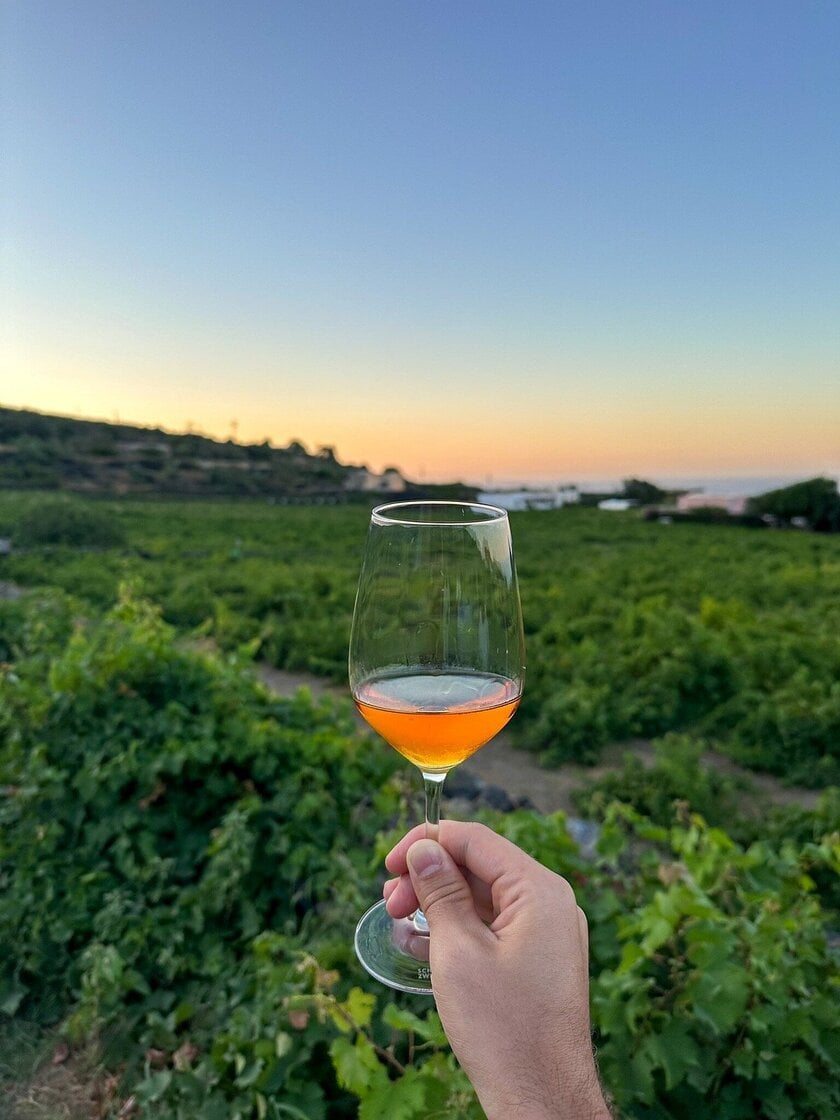
Pantelleria's harsh weather conditions are an advantage for developing the wine grape production industry.
Pantelleria is more than just a place where grapes are grown, it is also a living symbol of the incredible resilience of humankind in the face of nature. Pantelleria wines are rare gems that deserve to be experienced once in a lifetime, not only for their unique flavors but also for their deep connection to history, dedication and sustainability. Every bottle from Pantelleria tells the story of an extraordinary land, a rich culture and the people who uphold its timeless traditions.






